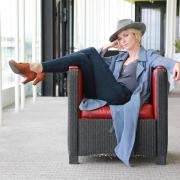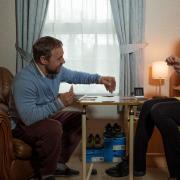A royal golden thread is woven throughout much of Lancashire’s history.
Henry IV, who was crowned in 1399, merged the Dukedom of Lancaster with the throne and since then the land and property that forms the Duchy of Lancaster has been passed down the royal line from monarch to monarch.
Each king and queen in the 620+ years since has held the title Duke of Lancaster; it's the sort of royal connection no other county can claim and is one which has been particularly close to the heart of the current queen.
That’s why this month’s platinum jubilee – the first, and probably only, chance to honour a monarch’s 70 years on the throne – will be celebrated that little bit harder around Lancashire.
For the last 25 years Lord Charles Shuttleworth has been the Lord Lieutenant, the Queen’s representative in the county, and in that time he has had a unique opportunity to get to know her better than almost anyone outside her family and household staff.
As Lord Lieutenant of Lancashire, and in his spells as chairman of the Association of Lord Lieutenants and chairman of the Duchy of Lancashire, he has worked closely with Her Majesty. He has been at her side on many royal visits and public engagements and has also spent time with her away from the crowds.
In an exclusive interview with Lancashire Life, Lord Shuttleworth, of Leck Hall, near Carnforth, said: ‘I was in close contact with the Queen at formal occasions and in more relaxed circumstances. I have always valued her leadership and her guidance greatly.
‘She has a very good sense of humour and would make many funny remarks – some of which it is best I don’t repeat.’
The Duchy estate in Lancashire extends to more than 45,000 acres and her role as Duke of Lancaster seems to be one the Queen has always relished. It has been widely reported that if she had been to relinquish the throne she would have retired to the Lancashire countryside.

Lord Shuttleworth added: ‘I used to wonder if the stories about her love of Lancashire were a myth, but then I heard her say it, so I know it is true. During my time as chairman of the Duchy of Lancashire she said: “What a wonderful part of the world. I always think I could live there”.
‘People sometimes question how long the monarchy will go on but my experience is that there are huge levels of support and interest from people across Lancashire. There is great love and support – particularly for the Queen – from people of all ages all over the county. Most people in Lancashire feel a special connection with the Queen as the Duke of Lancaster.’
The Queen visited Lancashire in each of the last two jubilee years – in 2002 she was in Preston and ten years later she visited Burnley – but at the age of 96 we are unlikely to see her on an official visit here again.
That visit to Burnley on a cold day in May is one which stands out in the memory for Lord Shuttleworth – he had quite a task to find a canal boat with adequate space for the Queen, Prince Philip, Prince Charles and the rest of the royal party to stand at the prow as it made its way through the weavers’ triangle.
He also recalls a visit to Lancaster Castle in 2015 – then only recently decommissioned from its role as a prison – when the Queen was keen to see inside the cells on A wing, and an occasion when she was jostled by a cow at Myerscough College: ‘I was frightened she was going to be knocked over but she handled the situation very well and with customary good humour.’
And Lord Shuttleworth added: ‘One of the best things about this job is being able to involve young people in the royal visits. On that day in Burnley we had a line-up of air and sea cadets forming a guard of honour, and I’m keen to involve young people in the jubilee celebrations as well.
‘Older generations may have a greater appreciation of the significance of the occasion, but younger people don’t have the same perspective. I would like them to have strong positive memories of the celebrations which they can share when they are older with future generations.’
One of the things they’ll be able to recall is Jamie Holman’s huge immersive artwork which ties together many historic threads from the last 70 years.
His 19 metre long tapestry which goes on show at Blackburn Cathedral on June 1 will be a lasting reminder of the occasion and a valuable asset for historians of the future.

Lord Shuttleworth and his deputy lieutenants commissioned the Blackburn-based artist after a rigorous selection process. His proposal won out amid competition from creatives working in almost every media and style.
‘I saw the open call for submissions and realised what unique opportunity it was to do something exciting and to work in a slightly different way,’ Jamie said. ‘My original idea was for a tapestry from each decade of the Queen’s reign but as the work evolved it became one large piece. It’s now a continuous weave that’s 19 metres long.’
The images in the artwork are based on photographs from the Talbot Archive, a remarkable collection of pictures taken in and around Blackburn over six decades by father and son photographers Wally and Howard Talbot.
The tapestry will be exhibited on a horseshoe-shaped frame so the viewer will feel surrounded, with history all around them.
The pictures won’t just recall royal visits, but will put them in the context of Lancashire at a time of unprecedented change.

Jamie, who was artist in residence for the British Textile Biennial in 2021, said: ‘The jubilee is a celebration of an extraordinary story for the Queen, but the last 70 years have been a time of incredible change for the county and the country as well.
‘We have moved from the industrial age to the digital age and there have been so many social and cultural changes and I have been recording stories from people aged 70 and above – people who were born in Lancashire as well as people who moved here.
‘They have spoken about the changes they have seen, their lives and their jobs; it has been absolutely fascinating for me. About a third of the interviews have included stories about the Queen and I have discovered some amazing things – there's a lifeboat station manager at Morecambe who spoke about his military past. In 1981 he was the guard who apprehended the man who took pot shots at the Queen at the Trooping of the Colour ceremony.
‘I also interviewed a man from Rishton who was a part of the Queen’s household for 20 years, but most of the stories are about people’s lives and work and the changes they have seen.
‘We have such a diverse county and I have been trying to speak to as many people as I can. It is heart-breaking to have to cut the interviews so much, but we’re speaking to 70 people and although the interviews are on average 45 minutes long, if we just use one minute from each, we’ll have more than an hour for visitors to listen to.’
Snippets of the interviews will seem to come from different parts of the tapestry and the unedited versions have been archived and will provide a valuable record of life in Lancashire during the reign of Queen Elizabeth II.
The installation will open at Blackburn Cathedral on June 1 and will be on show there until late November when it will tour Lancashire.
‘The work I make tends to leave Lancashire, it seems to be collected and bought everywhere but here, so although I work in a studio in Blackburn, this feels like something of a homecoming,’ Jamie added.
‘The weaving has been done by John Spencer Textiles and the tapestry has been finished by Herbert Parker, the frame is being fabricated in Heysham. It’s great that we have such experts in Lancashire who can create the finished piece – my job is the fun part.’
Duchy details
For more than 650 years the reigning sovereign has held the title Duke of Lancaster and these days the Duchy is administered on behalf of the Queen by the office of the Chancellor of the Duchy of Lancaster, currently Steven Barclay MP who was brought up in Lytham.
The Duke of Lancaster title was first bestowed in 1351, on Henry Grosmont. He succeeded his father Henry, the third Earl of Lancaster, to the Lancastrian earldom in 1345. Grosmont was a nobleman, diplomat, administrator and soldier who took part in many of Edward III’s military campaigns. Edward III gave Henry the dukedom ‘in recognition of astonishing deeds of prowess and feats of arms’ on the battlefields of France.
The first king of the House of Lancaster was Henry IV, who was crowned in October 1399.
The Duchy of Lancaster is not the property of The Crown, but is the personal inherited property of the monarch.
The Duchy now consists of lands across the UK, mostly in Lancashire, but also in Cheshire, Staffordshire, Yorkshire, Derbyshire, London and Wales. There are five agricultural estates between Preston and Lancaster: at Salwick, Myerscough, Winmarleigh, Whitewell and the Wyreside Estate near Dolphinholme. The Duchy is also the major landowner of the foreshore from Lancashire’s boundary in the Mersey estuary to Barrow. Lancaster Castle is one of ten castles on the Duchy’s estates in England and Wales, most of which are ruins.



























